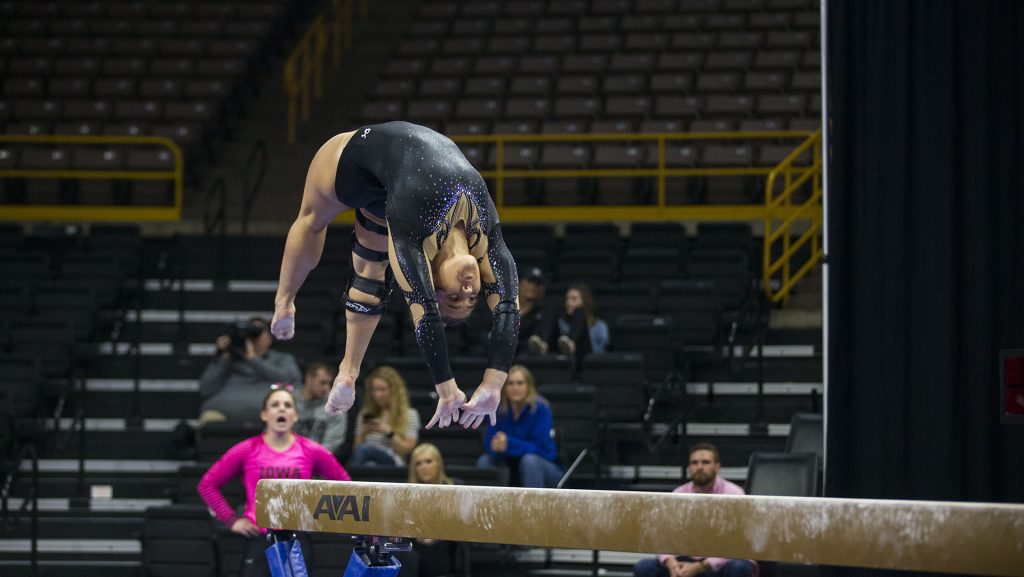Two weekends ago, the Iowa women’s gymnastics team lost its leadoff on beam, junior Rose Piorkowski, to a mid-meet injury. She’s likely done for the season.
Last weekend, the men’s team welcomed a teammate, sophomore Andrew Herrador, back to the high bar after he recovered from a back injury.
For both teams, injuries are an unfortunate variable for a lineup.
RELATED: GymHawks Show Up With A Vengeance
“We have that example in football all the time every year — they always talk about the next man in. It’s something that I think every sport prepares for,” said women’s gymnastics head coach Larissa Libby. “Knowing that, we talk to our kids about that all the time. Seven, eight, and nine are probably more important than one, two, three, four, five, and six, because if anything happens, those kids are baptized by fire — ‘You’re going in. You don’t get any warm-up, no nothing. You’re in.’ And that’s tough.”
Talking is helpful for the mentality part, but further preventative measures keep injuries from being so rampant on a team, senior Dylan Ellsworth says.
“I think out of a lot of teams, we’re one of the healthiest teams,” he said. “We’re pretty proactive on injury prevention, and we do a lot of basics on tumbling, a lot of basics on every event. The more basics you do, the more it helps your health.”
Proactive measures certainly help minimize the risk of injury, but sometimes an injury can’t be prevented.
When this is the case, the narrative changes to getting back fast but smart.
RELATED: Both Iowa gymnastics teams fall short
“Injury is about putting team before yourself,” said men’s gymnastics head coach JD Reive. “It happens, but what can you provide to the team when you’re in that situation?”
The injured athlete’s role as a part of the team certainly changes, forcing team dynamics to also change.
For the women’s team, Piorkowski’s injury illustrates this.
“It’s just one of those things you try to keep away from the team, especially one as young as ours,” said Libby. “She is a huge part of what we do. Her character, her personality, making sure the team is calm. It’s hard to lose that kind of person. She came back out on the floor [during the meet]. She’s capable of breaking her legs and still coming back out here — she’s that kind of kid.”
How the injured athlete supports the rest of the team is incredibly important, but how the rest of the team supports that athlete is just as crucial.
“It’s sad, but you remember that we have something to accomplish, so you say, ‘All right, one down, but we put the next person up and do our jobs just like we do every day,’ ” said senior Lanie Snyder. “Injuries are tough for everybody, but I think it just makes everyone work just a little harder because if one person goes down, we have to back them up. We have everybody on board working on their routines so they can fill the spot, and so we’re just working really hard for Rose.”
RELATED: Gymnastics reset: better, worse, maybe
The extent of Piorkowski’s injury is yet unclear, but Herrador’s performance is an example of the joy a recovered athlete can bring to her or his team upon returning to competition.
He illustrated not only this but also the responsibility that comes with being injured.
“Now that I’m back, it feels better than ever to be out there competing,” he said. “I can’t really describe it, but I feel like I should have been contributing that kind of score more consistently throughout the season so far. It felt really good [to be back], though.”



